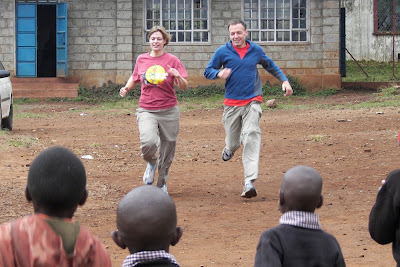"I'm in the wrong place!" I thought angrily. How could it be that after hours of preparation my photo of the "super moon" was probably not going to happen as planned? The modern technology I had employed to try to capture the best shot had failed me.
I started the day with a list of locations in Rochester that I thought might be good for shooting the moon. Each one was previewed and mapped out with Google Earth. The KML file with the locations was transferred to my phone and Dan O. and I went to each site in turn assessing it for a suitable foreground with the proper orientation. The first sign of trouble happened early when the phone's compass and sky map applications failed to calibrate properly. In the morning I had determined that the moon would rise at about ten degrees south of east but since the compass wasn't working it was difficult to visualize exactly where that was.
After visiting all the locations only one seemed to hold any promise, and we weren't really happy with it. In the end we decided to scrap the urban concept and photograph in Mendon Ponds Park. That afternoon I spent another two hours with Google Earth trying to find the most likely locations that fit our criteria: some sort of vegetation or other detail in the immediate foreground, water in the middle ground (but not a vast expanse) and hillside trees in the distance. Several places along the south west edge of Hundred Acre Pond seemed our best bet.
 Dan and Sarah at the edge of Hundred Acre Pond in Mendon Ponds Park.
Dan and Sarah at the edge of Hundred Acre Pond in Mendon Ponds Park.
Dan, Sarah and I got to the park about an hour before moonrise and geared up to scout out locations. Along the way we were distracted by four deer running just uphill of us across the West Esker and a beaver swimming along the edge of the pond. After surveying the area I decided to set up my tripod at the narrow channel that divides Hundred Acre Pond and Deep Pond. Dan decided to try his luck further back along the edge of the pond.
Here I was waiting and wondering when the moon would finally rise above the small hill in the east when I realized that there was a definite glow about 20 degrees to the right from where, based on my jittery phone compass, I had expected the moon to rise. The view in that direction was blocked by dense tree growth. I grabbed up my tripod, Sarah got the pack and we hustled back to where I thought I could get a better shot, but it was too late. The moon was already off the horizon there and I had no foreground detail at all, I might as well have taken pictures of the moon from just outside my front door.
I worked my way over to Dan who had managed to find a location with cattails, water, and distant trees. As I muttered about my poor photographic skills I started to look around (always a good idea for a photographer) and I had a sudden revelation: with the bright light I could make some landscape photographs illuminated by the moonlight and with stars overhead.
 Constellation Orion over Mendon Ponds Park lit by "super moon" light.
Constellation Orion over Mendon Ponds Park lit by "super moon" light.
After a few experimental exposures I began photographing the pond with the Big Dipper hanging directly above. Right away I felt that I had something good here, maybe even better than a photo of the moon itself. After an hour or so of shooting with one final stop for a photo of Orion striding above the pond as though in pursuit of the deer we saw earlier, we piled our gear into the car and headed off to dinner. By the end it turned out to be a very satisfying evening of photography, nature, and friends. Next time though I'm bringing some ancient technology - a compass and a map.
